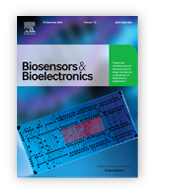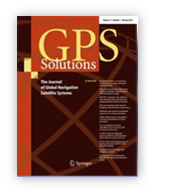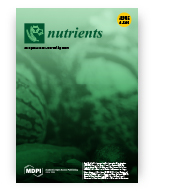On the application of multi-parametric optical phenotyping of bacterial colonies for multipurpose microbiological diagnostics
Igor Buzalewicz, Magdalena Karwańska, Alina Wieliczko, Halina Podbielska
Biosensors & Bioelectronics
 The development of new diagnostics techniques and modalities is critical for early detection of microbial contamination. In this study, the novel integrated system for multi-parametric optical phenotyping and characterization of bacterial colonies, is presented. The system combines Mach-Zehnder interferometer with a spectral imaging system for capturing multispectral diffraction patterns and multispectral two-dimensional transmission maps of bacterial colonies, along with the simultaneous interferometric profilometry. The herein presented investigation was carried out on five representative bacteria species and nearly 3000 registered multispectral optical signatures. The interferograms were analyzed by four-step phase shift algorithm to reconstruct the colony profile to enable the obtaining of the comparable optical signatures. The dedicated image processing algorithms were used for extraction of quantitative features of these signatures. The random forest algorithm was applied for selection of the most predictive set of features, which were used in classification model based on Support-Vector Machine. Obtained results have shown that the use of multiple multispectral optical signatures provide a multi-parametric bacteria identification at an exceptionally high accuracy (99.4–100%), significantly better than in case of classification based on each of these signatures (multispectral diffraction patterns, two-dimensional transmission coefficient maps), separately. Obtained results revealed that analysis of multispectral signatures can also be applied for characterisation of physical, physicochemical and chemical properties of the bacterial colonies in the presence of the antimicrobial factors. Therefore, the proposed label-free, non-destructive optical technique has perspectives to be exploited in the multipurpose diagnostics and it can be used as a pre-screening tool in microbiological laboratories.
The development of new diagnostics techniques and modalities is critical for early detection of microbial contamination. In this study, the novel integrated system for multi-parametric optical phenotyping and characterization of bacterial colonies, is presented. The system combines Mach-Zehnder interferometer with a spectral imaging system for capturing multispectral diffraction patterns and multispectral two-dimensional transmission maps of bacterial colonies, along with the simultaneous interferometric profilometry. The herein presented investigation was carried out on five representative bacteria species and nearly 3000 registered multispectral optical signatures. The interferograms were analyzed by four-step phase shift algorithm to reconstruct the colony profile to enable the obtaining of the comparable optical signatures. The dedicated image processing algorithms were used for extraction of quantitative features of these signatures. The random forest algorithm was applied for selection of the most predictive set of features, which were used in classification model based on Support-Vector Machine. Obtained results have shown that the use of multiple multispectral optical signatures provide a multi-parametric bacteria identification at an exceptionally high accuracy (99.4–100%), significantly better than in case of classification based on each of these signatures (multispectral diffraction patterns, two-dimensional transmission coefficient maps), separately. Obtained results revealed that analysis of multispectral signatures can also be applied for characterisation of physical, physicochemical and chemical properties of the bacterial colonies in the presence of the antimicrobial factors. Therefore, the proposed label-free, non-destructive optical technique has perspectives to be exploited in the multipurpose diagnostics and it can be used as a pre-screening tool in microbiological laboratories.
10.1016/j.bios.2020.112761
Determination of precise Galileo orbits using combined GNSS and SLR observations
Grzegorz Bury, Krzysztof Sośnica, Radosław Zajdel, Dariusz Strugarek, Urs Hugentobler
GPS Solutions
 Galileo satellites are equipped with laser retroreflector arrays for satellite laser ranging (SLR). In this study, we develop a methodology for the GNSS-SLR combination at the normal equation level with three different weighting strategies and evaluate the impact of laser observations on the determined Galileo orbits. We provide the optimum weighting scheme for precise orbit determination employing the co-location onboard Galileo. The combined GNSS-SLR solution diminishes the semimajor axis formal error by up to 62%, as well as reduces the dependency between values of formal errors and the elevation of the Sun above the orbital plane—the β angle. In the combined solution, the standard deviation of the SLR residuals decreases from 36.1 to 29.6 mm for Galileo-IOV satellites and |β|> 60°, when compared to GNSS-only solutions. Moreover, the bias of the Length-of-Day parameter is 20% lower for the combined solution when compared to the microwave one. As a result, the combination of GNSS and SLR observations provides promising results for future co-locations onboard the Galileo satellites for the orbit determination, realization of the terrestrial reference frames, and deriving geodetic parameters.
Galileo satellites are equipped with laser retroreflector arrays for satellite laser ranging (SLR). In this study, we develop a methodology for the GNSS-SLR combination at the normal equation level with three different weighting strategies and evaluate the impact of laser observations on the determined Galileo orbits. We provide the optimum weighting scheme for precise orbit determination employing the co-location onboard Galileo. The combined GNSS-SLR solution diminishes the semimajor axis formal error by up to 62%, as well as reduces the dependency between values of formal errors and the elevation of the Sun above the orbital plane—the β angle. In the combined solution, the standard deviation of the SLR residuals decreases from 36.1 to 29.6 mm for Galileo-IOV satellites and |β|> 60°, when compared to GNSS-only solutions. Moreover, the bias of the Length-of-Day parameter is 20% lower for the combined solution when compared to the microwave one. As a result, the combination of GNSS and SLR observations provides promising results for future co-locations onboard the Galileo satellites for the orbit determination, realization of the terrestrial reference frames, and deriving geodetic parameters.
10.1007/s10291-020-01045-3
Dietary Omega-3 Source Effect on the Fatty Acid Profile of Intramuscular and Perimuscular Fat — Preliminary Study on a Rat Model
Katarzyna Czyż, Ewa Sokoła-Wysoczańska, Robert Bodkowski, Paulina Cholewińska, Anna Wyrostek
Nutrients
 Fatty acids from the omega-3 family are an important element of both human and animal diets. Their activity involves a range of functions for the functioning of a whole organism, and their presence in animal diets can be considered as a means for animal origin product enrichment for human benefit or as compounds profitable for an animal’s health status. The aim of this preliminary study was to compare the effect of supplements rich in omega-3 fatty acids (linseed oil, linseed oil ethyl esters, and fish oil) in rat feed on the fatty acid profile of their intramuscular and perimuscular fat. The results demonstrated beneficial changes in fatty acid profiles (a decrease in saturated acids, an increase in unsaturated ones, i.e., omega-3 acids share) of examined tissues in the case of all supplements however, particular attention should be paid to linseed oil ethyl esters, which significantly increased the content of all omega-3 acids. Supplementation of animal diet with linseed oil ethyl esters may be beneficial for both animals, as omega-3 fatty acids exhibit profitable properties related to an animal’s health status and productivity, and humans who consume such enriched products.
Fatty acids from the omega-3 family are an important element of both human and animal diets. Their activity involves a range of functions for the functioning of a whole organism, and their presence in animal diets can be considered as a means for animal origin product enrichment for human benefit or as compounds profitable for an animal’s health status. The aim of this preliminary study was to compare the effect of supplements rich in omega-3 fatty acids (linseed oil, linseed oil ethyl esters, and fish oil) in rat feed on the fatty acid profile of their intramuscular and perimuscular fat. The results demonstrated beneficial changes in fatty acid profiles (a decrease in saturated acids, an increase in unsaturated ones, i.e., omega-3 acids share) of examined tissues in the case of all supplements however, particular attention should be paid to linseed oil ethyl esters, which significantly increased the content of all omega-3 acids. Supplementation of animal diet with linseed oil ethyl esters may be beneficial for both animals, as omega-3 fatty acids exhibit profitable properties related to an animal’s health status and productivity, and humans who consume such enriched products.
10.3390/nu12113382









